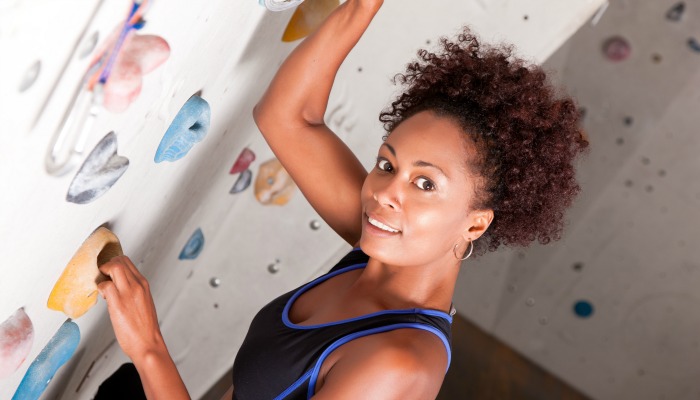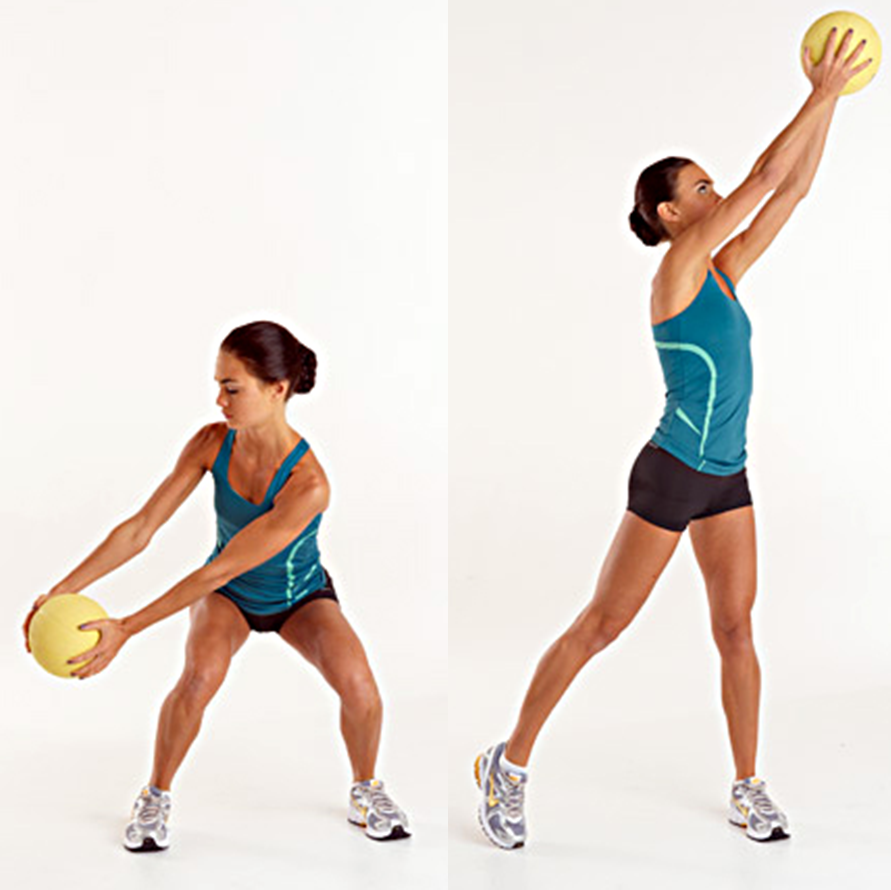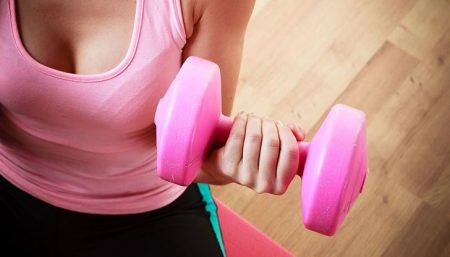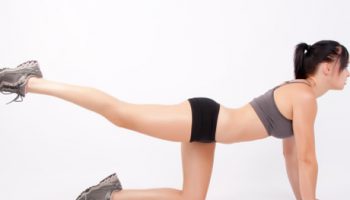
Rock Climbing is one of the best total body workouts. The motion of climbing works every part of you. From your fingers and forearms as you grip the rock or climbing hold, your abs and core as you lift your legs into position then your whole body as you propel yourself up with your legs and pull up with on your arms. Climbing develops lean, endurance muscles (the same muscles used by marathon runners). It strengthens core muscles better than exercise routines designed to focus on that particular region.
You can try a rock climbing workout at home like this one.
- Plank (Mind, Core & Arms)
A plank, or pillar hold, is an isometric (stationary) resistance exercise. It’s also one of the few exercises that works all of your core muscles, including the rectus abdominus (six-pack muscles), transverse abdominus, internal and external obliques, hips and back. Forearm planks also work your deltoids, pectorals, serratus anterior (muscles surrounding your rib cage), and quadriceps.Just wait until you start to feel shaky and then challenge yourself to hold it for 30 more seconds. Once you reach that milestone, hold it for 30 more seconds. Keep doing this until you are just vibrating all over and can barely hold up, and then I hold it for 15 more seconds. You want your shoulders directly above your elbows or wrists (depending on the variation), and your back straight. Try not to stick your butt too high in the air or let your lower back sink too far down. It’s easy for your form to suffer as you get tired, so try to imagine making a slight C-curve with your abs. You should feel your abs engage more intensely and your pelvis rotate slightly inwards, like a string is pulling your belly button toward your face.
- Bucket Blender (Forearms)
Forearm strength and endurance is important for climbing, so get a large bucket and about 20-30 pounds of rice or grain . Working your flexors in your forearms (the ones we use for climbing) is just as important as working the extensors (the antagonist muscles located on top of the forearm). Strengthening your forearm extensors can help prevent tendonitis, forearm tightness, and wrist injuries.

- Woodchop (Core, Legs & Arms)
Stand in a split-stance position with your left foot forward holding a medicine ball in both hands. Keep the ball close to your body. Engage your abdominal /core muscles to stiffen your torso and stabilize your spine. Your torso should be upright. Slowly, bring the medicine ball down and across your body toward the right hip. Do not rotate your head, chest, torso or hips, and keep them facing forward. Keep the medicine ball relatively close to your body. Hold this end position briefly before returning to your starting position. Repeat the movement in the opposite direction with your opposite leg forward. - Burpees (Arms, Chest, Core & Legs)
Stronger legs can help you out with dynos, heel hooks, high steps, and more. Stand with your feet hip width apart and your arms down by your side. Lower into a squat position with your hands flat on the floor in front of you. Kick your legs backwards into a press up position and lower your chest to the floor. Push your chest back up to the press up position thrust both feet forward so you are back in the squat position. Jump up and raise both hands over your head.
- Hang Board (Fingers & Arms)
There are tons of exercises that you can do at home to get stronger and leaner, but in order to be a strong climber, you have to be able to pull, and pull hard. If you can afford to buy one climbing toy for your home, I would highly recommend a hang board. You can do pull ups on it, hang with just body weight, or put on a heavy backpack for added weight.
Training for climbing is considerably more difficult without access to an amazing climbing gym, but it’s still possible. Stick with these body weight exercises to keep you in climbing shape.
Related Links
- Exercises to Cross-train and Stay Socially Active
- Time to Plank Up your Abs
- Pull-Ups: For Strength & Higher Calorie Expenditure
Disclaimer
The Content is not intended to be a substitute for professional medical advice, diagnosis, or treatment. Always seek the advice of your physician or other qualified health provider with any questions you may have regarding a medical condition.

